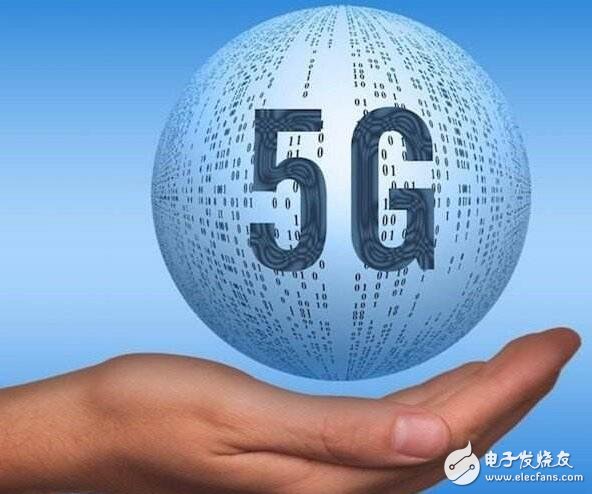On December 21, 2017, at the 78th plenary meeting of the International Telecommunication Standards Organization 3GPP RAN, the 5G NR first release was officially frozen and released. This will be the world's first 5G standard for commercial deployment. This standard was completed six months ahead of schedule.
AT&T, BT, China Mobile, China Telecom, China Unicom, Deutsche Telekom, Ericsson, Fujitsu, Huawei, Intel, Korea Telecom, LG Electronics, LG Uplus, MediaTek, NEC, Nokia, NTT DOCOMO, Orange, Qualcomm Qualcomm Technologies, Samsung Electronics, SK Telecom, Sony Mobile Communications, Sprint, TIM, Telefonica, Telia, T-Mobile, Verizon, Vodafone and ZTE Announced that the completion of the first 5G new air interface standard will open 5G for the global mobile industry The comprehensive development of air interface and support laid the foundation for the large-scale trial and commercial deployment of 5G new airspace as early as 2019.
On February 27, 2017 in Barcelona, ​​the global mobile industry leaders jointly announced support for accelerating the 5G new airspace standardization process and proposed a medium-term milestone, namely the implementation of the first non-independent 5G new air interface. As a follow-up to the statement, a consensus was reached on the acceleration of the process at the 3GPP RAN plenary meeting in Dubrovnik, Croatia on March 9. The completed first version specification is part of 3GPP Release 15. The completion of this standard is an important milestone in supporting the efficient and comprehensive development of the 5G new air interface, which will greatly enhance the capabilities of the 3GPP system and help create opportunities to enter the vertical market. 3GPP plans to continue to develop Release 15, including increased support for independent 5G new airspace, which was also agreed by 3GPP in Dubrovnik.
The 5G new air interface underlying specification aims to support both independent and non-independent 5G airspace to ensure that 3GPP benefits the global industry from a large-scale single 5G new air interface ecosystem. We are grateful for the tremendous efforts 3GPP has made in completing this challenging standardization process. Hank Kafka, vice president of AT&TAT&T Access Architecture and Analytics, said: "We are proud to see this standard completed. This milestone will support the next phase of device development and the transition to interoperability testing and early 5G availability. This demonstrates the dedication and leadership of 3GPP member companies to consistently accelerate standards development and support the rapid deployment of technology.†Neil J. McRae, Chief Architect of BT Telecom, said: “British Telecom welcomes the first deployment of 5G At the key step, we are excited about the further innovation that 5G will bring.
We are proud to be involved, and BT is committed to continue to deepen 5G standardization as planned, benefiting our customers and society. Li Zhengmao, vice president of China Mobile China Mobile Communications Corporation, said: "The first version of the 5G new air interface not only provides a non-independent solution for 5G deployment, but also completes the common part of the non-independent and independent mode, and is the global global 5G unified system. The market size has laid a solid foundation. We believe that the next important milestone, the independent standard that provides new end-to-end 5G capabilities, will be completed in June 2018, which is critical to supporting operators in expanding their business and vertical markets. China Mobile is actively cooperating with industry partners to support 5G commercialization by 2020 and to provide diverse services to customers. â€

China Telecom
Liu Guiqing, deputy general manager of China Telecom Group Co., Ltd. said: "China Telecom is proud to participate in the 3GPP standard work, prompting the completion of the first 5G new air interface specification. We expect this important milestone together with the independent mode specification to be completed soon. In the next few years, we will promote and accelerate the development, testing and commercial deployment of 5G products. With the successful completion of the 5G new air interface standard, China Telecom plans to lead 5G work and start field trials in many large cities in China as early as 2018. Ready for commercial use."
China Unicom
Shao Guanglu, deputy general manager of China United Network Communications Group, said: "This is an important step for 3GPP and the entire industry. The first version of the 5G new air interface standard provides basic functions for non-independent and independent deployment, which is equally important for operators. We firmly believe that for the human society and the vertical industry, the whole industry will be able to work together to provide better 5G services. We welcome the arrival of the 5G era and will continue to work with industry partners to make 5G commercial success. â€
Finally, for this week's several positive stocks have been selected, interested friends can go to my real circle to receive! Will definitely surprise you!
5g standard formulationHow is the 5g standard formulated?
Qualcomm purchased CDMA from the famous American patent company interdigital. The most important contribution was to solve the power control problem of CDMA. At that time, other communication companies were not optimistic about this technology. Qualcomm had to continue to develop and apply for related patents so much that it reached near The degree of monopoly. In the development of the 3G standard, Europe studied core technologies such as TDMA, CDMA and OFDM. Finally, Europe found that CDMA was the most mature under the technical conditions at that time, and chose CDMA as the core technology of the 3G standard.
When the 3G standard was formulated, the United States and South Korea led the development of CDMA technology to define the 3G standard as CDMA2000, and Europe modified CDMA to launch WCDMA. However, because the core technology is CDMA Qualcomm still has a strong patent advantage in the WCDMA standard. The dispute between Europe and the United States and the neglect of China's TD-SCDMA have made China's TD-SCDMA one of the 3G standards.
The 4G standard was formulated. In 2004, Europe and China cooperated to develop a 4G technology named Long Term Evolution. In order to continue the technical advantages of frequency division technology WCDMA, Europe actively promotes LTE-FDD of frequency division technology to become 4G standard; China promotes TD-LTE to become 4G standard, in order to bypass the patent advantage of Qualcomm, China and Europe cooperate closely in 2004. Qualcomm was left behind in the LTE Feasibility Study Phase in 2006, after which OFDM and SCFDMA were selected for the 4G core technology.
Qualcomm was also very arrogant at the time and continued to develop its own CDMA REV.B. When the feasibility study was completed in Central Europe in 2006, Qualcomm launched its own 4G standard and named it CDMA REV.C intends to continue its CDMA technology advantages, core technology. It was CDMA and OFDM, and CDMA REV.C was later renamed UMB but was eventually forced to quit in 2008 due to technical flaws. At the same time, another high-tech giant in the United States, Intel, is the same as TD-LTE, which is the WIMAX of time-division technology. However, because Intel did not coordinate with Qualcomm's interests, in 2010, Qualcomm and Ericsson also expressed their support for TD-LTE, which caused WIMAX to die!
It can be seen that the formulation of the 3G and 4G standards is first of all a game between China, the United States and Europe. After the game between China and the United States and the European Union is completed, it is the turn of companies to compete and share economic interests based on the patents they own. China needs to learn from the lessons of the United States in promoting the 4G standard. That is to say, the United States’ own enterprises have not coordinated good interests, which ultimately led to the failure of the two American standards to become 4G standards. Qualcomm and Intel’s competition will eventually make China profitable!
The formulation of the 5G standard is still the strongest three-party leader of China, the United States and the European Union. The strength of the two countries of South Korea and Japan can only be chosen to follow. The European Union has confirmed that Ericsson will continue to serve as the new METIS-II EU project coordinator. Ericsson is leading the development of European mobile communication standards from WCDMA to LTE-FDD. Now the EU has established a long-term consensus on the 5G standard. The leadership of Ericsson will undoubtedly let the EU The 5G standard gained an opportunity. China and the United States have not yet determined which company is leading the 5G standard.

Which groups are responsible for the 5g standard setting?
1, 3GPP
In order to welcome the coming of the 5G first year, 3GPP, the most widely-regulated standardization organization in the world, is also busy.
In September 2015, 3GPP RAN 5G workshop, more than 80 communication organizations and telecom operators, equipment, terminals and chip companies in China, Huashan Jianjian, discussed the 5G potential technical solutions and standardization work plans. It is clear that the 5G new air interface and LTE-A evolution will simultaneously carry out standard definition work in 3GPP R14 and subsequent versions. An evaluation of the specific technical programme will be carried out in each working group in March 2016. For more information, please look at the S^2 star article "3GPP RAN Definition 5G Standardization Roadmap" (poke here).
Subsequent 3GPP will submit 3GPP standard definition results in accordance with the ITU schedule.
2, IMT-2020
As a domestic 5G organization, the IMT-2020 (5G) promotion group released the "5G Vision and Demand White Paper" in May last year. In May this year, the "5G Wireless Technology Architecture White Paper" and "5G Network Technology Architecture White Paper" were released. (IMT-2020 (5G) Promotion Group), two white papers give some domestic technical views on 5G from the aspects of wireless air interface technology and network architecture, among which wireless air interface technology includes large-scale antennas and ultra-dense networking. , high-frequency communication and new multi-site. Domestic operators represented by China Telecom and China Mobile and domestic equipment vendors represented by Huawei, ZTE and Datang participated extensively in the discussion of the IMT-2020 (5G) promotion group. Judging from the data released at the current exhibitions, the 5G development progress of domestic equipment manufacturers is still at the international leading level.
3. METIS
Since the establishment of the METIS project for 5G research initiated in Europe in 2012, the research results have been receiving international attention, but the project is only a 5G outpost, which officially ended in June 2015. During the project, a number of influential research reports (https://) were released, including 5G network architecture design, 5G potential air interface access technology and corresponding evaluation results.
4, 5GPPP
5GPPP is a 5G research organization announced by the European Union in 2013. From the perspective of time and focus, it has the meaning of undertaking with the METIS project. METIS will do the preliminary research work, while 5GPPP will standardize for the later technology. According to its publicity: "5GPPP will become the proposal organization for the follow-up 5G technical standards, that is, through the joint discussion of vendors from different value chain links, find new application requirements for the next generation of mobile communication technology, and plan for efficiency. The introduction of technology has become a common technical standard for the industry."
Currently, 5GPPP does not make too much sound. According to the plan, there will be corresponding Demo and Trial in the follow-up.

5g standard formulation or China
After more than 30 years of intense market slapping, many Chinese high-tech companies have become multinational giants in the communications field. They also laid out R&D on 5G technology early and accumulated patented technology, becoming the global leader in the 5G era. At the same time, 5G is an open ecosystem, and Chinese companies are working closely with industry players around the world to jointly promote the commercialization of 5G.
Both Huawei and ZTE are core members of China's IMT-2020 (5G) promotion group. Huawei actively participates in the EU-led 5G project and is a founding member of the UK 5GIC and an important member of the Japanese 5GMF. In the process of promoting the global 5G industry, Huawei conducted extensive dialogues with operators and launched joint innovation and technical verification on 5G with leading global operators such as China Mobile, Japan NTT DoCoMo, Europe Vodafone, German Telecom, and Spain Telecom.
ZTE has served as the chairman of the IMT-2020 IEEE working group and the vice chairman of the IMT-2020 network technology working group. He has led the research work of several sub-working groups and devoted himself to the research of 5G wireless key technologies and next-generation network architecture. jobs. Last year, ZTE joined the EU H2020 program and is committed to 5G innovation research. In addition to being listed by Deutsche Telekom as one of the first 5G innovation lab partners, ZTE has launched 5G R&D and cooperation with many high-end operators such as China Mobile, Japan Softbank, Korea KT and Malaysia U Mobile.
As the world's largest communications market and an important R&D center, China's voice in the 5G era is expected to surpass the past. After 2G follow-up, 3G breakthrough, and 4G leading development, China's mobile communication technology will become a leader in the 5G era.
Network Accessories,Wifi Adapter,Fiber Optic Network Components,Splitter Fiber Optic
Cixi Dani Plastic Products Co.,Ltd , https://www.dani-fiber-optic.com